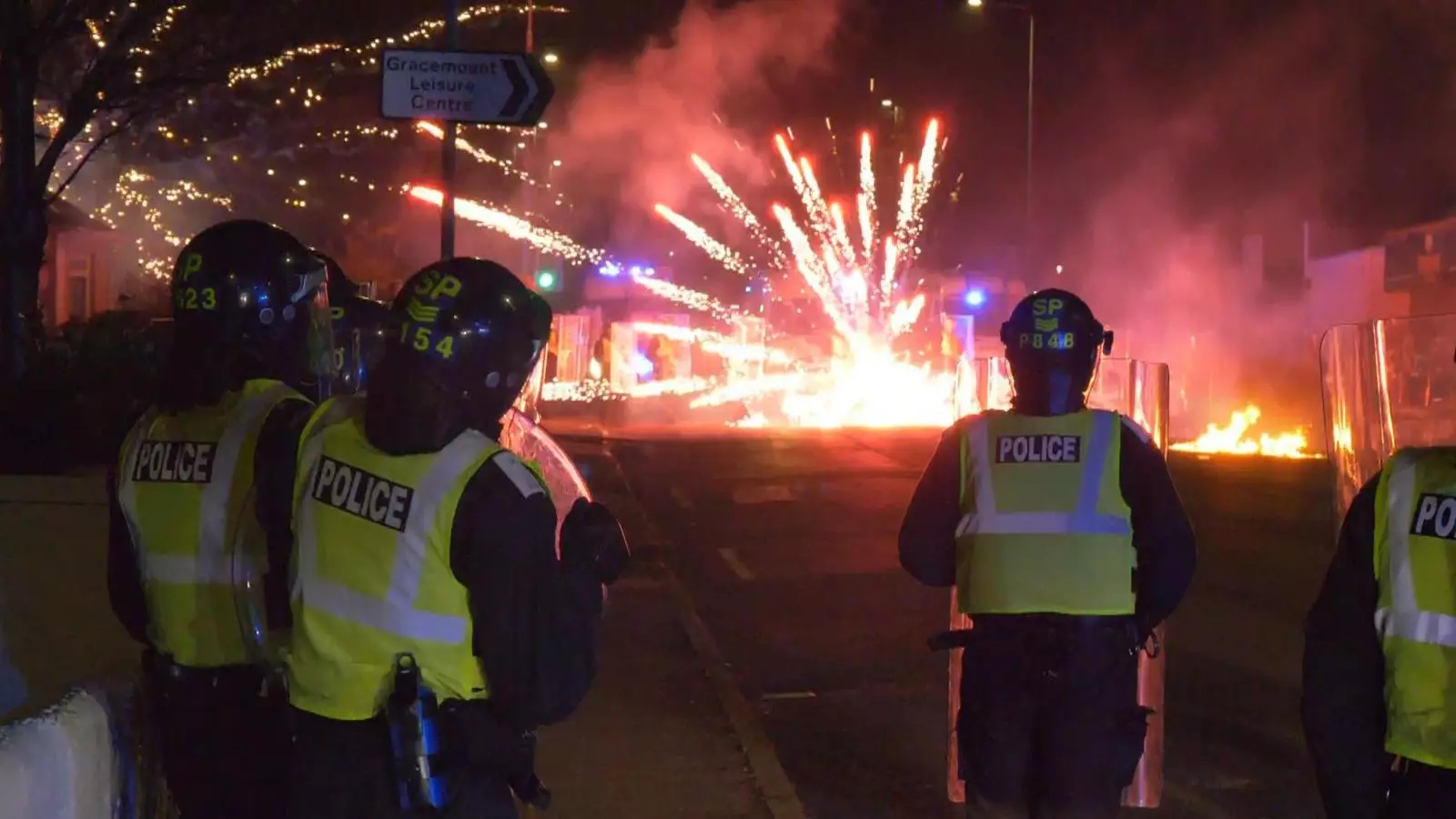The annual Bonfire Night, typically a celebration filled with fireworks and camaraderie, transformed into turmoil in Edinburgh this year. Large groups of young individuals took to the streets, resulting in an environment of chaos and danger when they hurled bricks, bottles, and fireworks at law enforcement. Such scenes are alarming, as the once festive atmosphere morphed into anarchy with city officials struggling to maintain order. Video footage capturing these events flooded social media, highlighting the extent to which the night spiraled out of control.
In response to this outbreak of violence, riot police donned their protective gear—helmets and shields, preparing for an escalating conflict. Specific areas such as Sighthill, Niddrie, Gracemount, and Gilmerton became hotspots for unrest. A police officer sustained injuries after a brick smashed through the window of her patrol car, a brutal reminder of the potential dangers faced by those sworn to protect the public. The heightened presence of law enforcement was inevitable; Superintendent Neil Wilson emphasized that there had been a notable uptick in incidents involving large groups throwing various projectiles.
Operational Measures and Challenges
As part of a strategic response, local authorities implemented additional stop and search powers in anticipation of firework-related crimes. This preventive measure was rooted in intelligence suggesting organized misdeeds. Meanwhile, a police helicopter circled overhead, supporting Operation Moonbeam—aimed at curbing those breaking the law with fireworks. These tactical advances were necessary, yet they illustrate the extreme measures that had to be taken to confront a growing problem of societal disorder.
Community Impact and Safety Concerns
Lothian Buses promptly withdrew all services from the Niddrie area, prioritizing the safety of both passengers and staff. Interestingly, this area had already been the center of disturbances a few days prior, with reports of public transport vehicles also targeted. The reoccurring nature of such incidents raises pressing questions about community safety and the involvement of youths in these events. The police’s burden, tackling not only the immediate chaos but also the underlying issues prompting such behaviors, is significant.
In Glasgow, authorities were active as well, seizing a substantial quantity of fireworks believed to be aimed at sale to the public, including minors. These actions serve as a reminder of the persistent issue surrounding fireworks, stressing the importance of public safety and regulation. Additionally, the establishment of Fireworks Control Zones (FCZ) across parts of Edinburgh and Glasgow highlights the urgency to address reckless celebrations. With penalties reaching £5,000 and potential jail time for violations within these zones, authorities are clearly sending a strong deterrent message.
In sharp contrast to Edinburgh’s turmoil, the renowned Lewes Bonfire Night celebrations in East Sussex proceeded without incident, thanks to police interventions aimed at avoiding overcrowding. This event, celebrated for its unique customs of burning effigies, showcased that while one city struggled with disorder, another managed to maintain a harmonious atmosphere. The differing outcomes remind us of the importance of proactive safety measures and community engagement, essential in transforming potentially hazardous gatherings into joyful celebrations.
As Bonfire Night unfolds in urban centers, it becomes crucial for communities and authorities alike to learn from these incidents to foster a safer environment for future festivities.

Leave a Reply